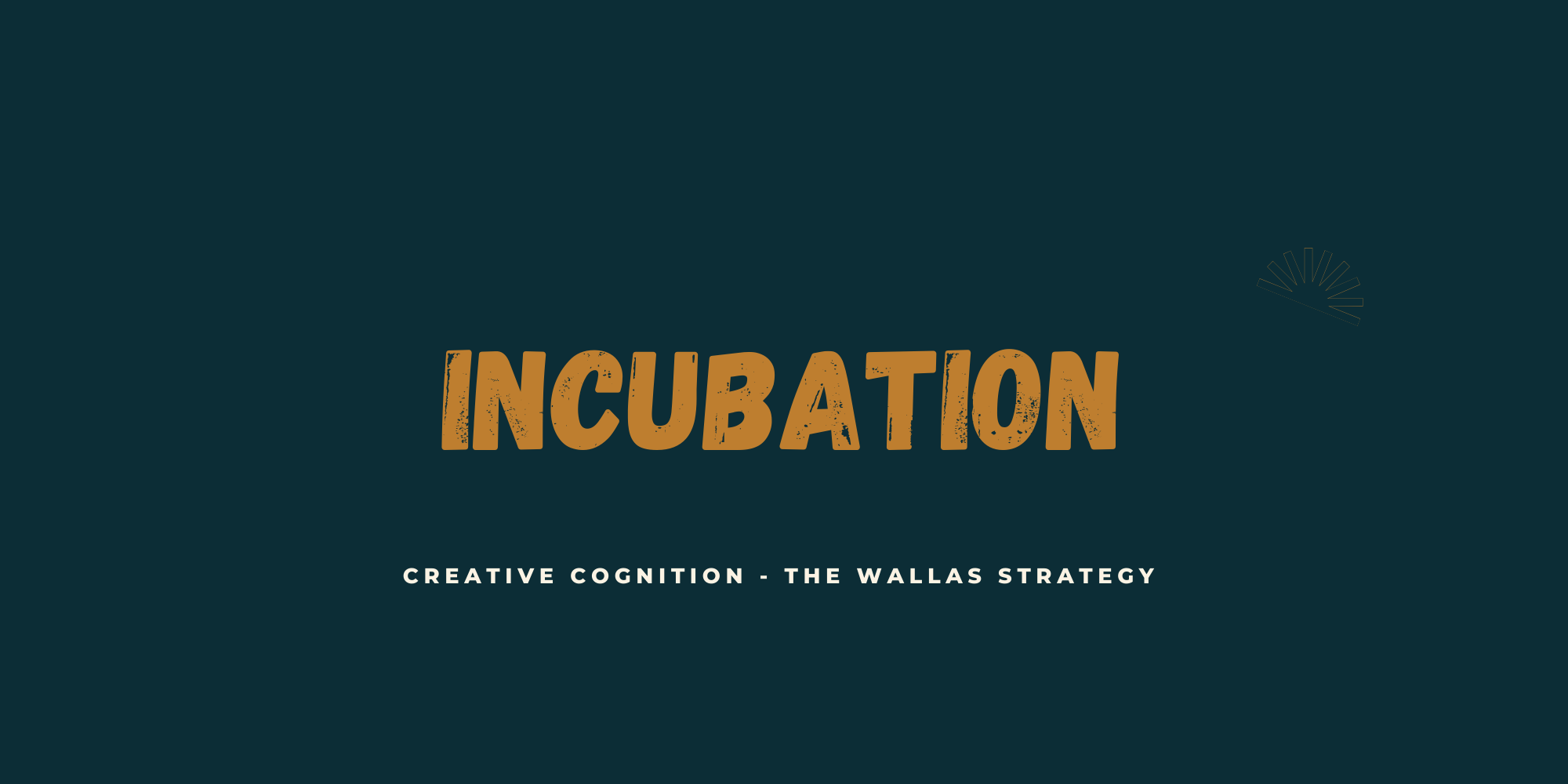
Incubation
Incubation was originally identified and developed by G. Wallas in his seminal 1926 text The Art of Thought (Wallas, 1926). Wallas identified four stages of creative cognition. The first stage is preparation, in which the subject has a problem to solve that isn’t easily identified nor solvable. The subject purposefully stops working on the problem, with the intention the unconscious mind will continue to work on it while the conscious mind is occupied on other matters not pertaining to the original problem. This second stage is known as incubation and studies have shown that it has been fruitful in solving nebulous problems. Companies such as Google use incubation to assist employees in innovation and inventing new software developments (Kotler & Wheal, 2018). The third stage of Wallas’ creative cognition process is illumination in which the unconscious mind proffers a solution or an answer to the problem. Finally, the stage of verification in which the subject confirms or validates the possible solution.
Understanding that incubation is hard to measure and predict - it is worth noting the research of Hao et al in 2014 studying groups by utilizing mind wandering and idea generation. The results of the study indicate that those that have a tendency to greater mind wandering produce fewer original ideas and those with lower mind wandering continue to generate ideas at a steady rate. How this impacts incubation is still to be studied although it is suggested by Baird that during the incubation period creativity may be enhanced through mind wandering – See mindfulness section below (Hao et al, 2014).
It is unclear how the unconscious works on problems when our conscious minds are busy with other duties, obligations, sleep, etc. Several studies have investigated the phenomenon. Ritter and Dijksterhuis suggest both the unconscious process as well as the theory that the conscious mind is distracted thereby releasing the inhibition of our own minds from coming up with the solutions or possible insights. They conclude the following,
“applying unconscious processes could, for example, entail that people set a goal to find creative solutions for a problem before they are distracted from the problem by doing something different.”
They go on to discuss what types of tasks one can do while in the incubation process.
“Although unconscious processes can be a powerful source to facilitate creativity, only engage in daydreaming or sleeping to produce groundbreaking discoveries or great artistic creations will not do the trick (Ritter and Dijsterhuis 2014).”
The notion that our unconscious mind is a powerful force and capable of problem solving is not a new idea. The author John Steinbeck wrote,
“A problem difficult at night is resolved in the morning after the committee of sleep has worked on it (Walker, 2017)”.
There is a great deal of research to support the process of incubation and many businesses are using it to promote idea generation, problem solving, and innovation. There is further research that supports creative thinking by allowing the mind to wander. The research also suggests that too much mind wandering can inhibit creative thinking (Hao et, al., 2014). To hone and improve one’s creativity the author will hope to improve this creative cognitive process through deliberate mind wandering and focusing techniques (see mindfulness below). Each day the author will write down a problem prior to sleep and place this problem under his pillow. He will ‘let go of the problem’ (on a conscious level) and turn over the problem to the unconscious mind to work on it (Smith & Smith, 2010).

